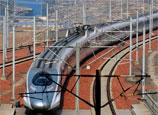
 |
| (File Photo) |
Chongqing's Hechuan district plans to invest 3.5 billion yuan building a 500-hectare theme park based on Chinese cartoon Xiha Youji. Hyped as the “Disneyland of China,” it is expected to open in 2016. Back in August, the city’s Nan’an district announced plans to invest 10 billion yuan to build the largest theme park in western China based on various Chinese cartoons. Compared with the 500-hectare theme park in Hechuan district, the Disneyland being built in Shanghai only covers more than 113 hectares.
Chongqing is not the only Chinese city to be obsessed with theme parks, and there has long been a “theme park fever” in China. More than 100 new theme parks have been built nationwide this year alone, and over 20 theme parks have been marketed as the “Disneyland of China” in recent years. Surprisingly, many theme parks are located in second- and third-tier cities with a relatively small number of tourists and inconvenient transportation.
As a matter of fact, there are around one fourth of theme parks making profits nationwide, whereas all of the remaining theme parks are money-losing, and even descend to burdens of local governments and investors. Even if the genuine “Disney” – Hong Kong Disneyland - makes profits after it had struggled for seven years, during which period it had lost hundreds of millions of yuan. In this case, it is evident that how far the mimic “Disney” could go.
As the name suggests, a theme park shall first have a “theme”. The success of Disney theme park is resulted from the enduring effect of Disney’s animated films in eight decades to a great extent. Its endless animated films and well-known animated characters not only attract generations of audiences to enjoy themselves in front of screens, but also make theme parks derived from the animation industry popular.
Compared with the animation industry abroad, China’s animation industry is still in its infancy. In this summer vacation, four Chinese animated films were shown one after another, but brought box-office receipts that were merely half of an imported animated film. Moreover, as theme parks are derivative products that would become popular only after the animation industry gets mature, they would stumble during the future development in such a context that the animation industry has not been high recognized. I wonder how many tourists will visit a “theme park” without theme.
In fact, another reason for the enthusiasm in building theme parks from place to place is that local governments intend to develop tourist properties under the name of theme parks. Though they know that theme parks are hard to make profits, they still stick with them because they could earn profit in other ways. In recent years, many theme parks have worked with property projects for support. As theme parks are developed as cultural projects, developers are easier to obtain commercial lands on that ground. Furthermore, many developers of theme parks that have been recently built have the background of commercial properties themselves.
However, theme parks that have been developed in haste not only occupy a lot of lands, but also add make China’s staggering animation industry to lose more due to these theme parks. Worse still, as various parks are only backed up by a few number of nameless animation products, they would be reduced to common amusement parks, fall into a vicious circle of homogenization, and become difficult to sustain them.
As a result, it is high time for the current fever of theme parks to cool down.
Source:Worker's Daily, author: Zhao Ang.














 11 Chinese children dead after van plunges into pond
11 Chinese children dead after van plunges into pond


![]()
